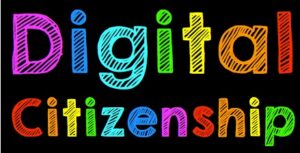Dr. Steven Katz defines learning as “the process through which experiences cause a permanent change in knowledge or behaviour” (Katz. What is Learning. 2014.). His professional development learning series, Leaders in Educational Thought Vol 2, No. 1, has been a thought-provoking lesson that I hope to catalogue in my memory as professional learning. I found it necessary to watch more than the three recommended videos to wrap my head around the Theory of Action and how to apply it using an ‘if-then’ statement. These extra videos validated some of my pedagogical thinking around barriers to learning.
Like Katz, I am that student that did well in Sciences and Mathematics, but it was like many things in life, a ‘use it or lose it’ scenario. When I was asked to teach Grade 8-11 Mathematics with one day’s notice, knowing nothing about the curriculum, I was terrified, but I didn’t shy away from the challenge. The students instantly knew I had no idea what I was doing. Some students gave me grace, whereas others did not. It took a few months to win them all over through simple demonstration that if I could learn it there in front of them, they could understand it too. However, I know that is not a strategy that I want to take in an elementary classroom.
My Theory of Action would have been very simple had I not watched more of Steven Katz’s videos. Now I feel it is incredibly complicated and hard even to wrap my mind around. How can I map out a pathway for permanent learning in an unknown future? I suppose it would start with determining my desired outcome…
As a practitioner, I plan to approach teaching Math and Science through an increasing knowledge base and understanding of mathematical and scientific concepts that further my students’ quality of learning.
To achieve this outcome, my Theory of Action will need to be put into place through a series of if-then statements, which I hope to achieve.
-
-
If I continue to engage in and complete my EDUC 398 Curriculum & Instruction of Math and Science using ADST, then I will have met that requirement of my BEd program, which will increase my professional learning in Math and Science.
-
-
-
If I deeply engage in professional learning throughout my two upcoming practicums, then I will further increase my learning through practice in teaching Math and Science.
-
Post-certification, if I continue to engage in meaningful, rich professional development opportunities where I give myself the chance to find the “why” or the “nature of the problem,” as Katz said, then I will increase my learning in these subjects (Katz. Challenges in Learning. 2014.).
-
If I apply my professional development training and learning regarding Math and Science in my classroom, especially immediately following Pro-D opportunities, then I will increase the quality of learning for my students.
-
If I commit to being a life-long learner and invest in the quality of my learning, then I will further the quality of learning for my students for as long as I am in practice.
-
I suppose that is really it isn’t it? If I commit to genuinely learning, permanent learning – then my students will reap the benefits, and that is the goal behind becoming a teacher: the reciprocity in the look of a child’s eyes when they truly learn something or the joy as they cross the stage at graduation.
References:
Katz, Steven. (2014, February 20). “Teachers Matter.” [Vimeo] Professional Learning Supports. Uploaded May 25, 2022 from https://vimeo.com/87241809
Katz, Steven. (2014, February 20). “Theory of Action.” [Vimeo]. Professional Learning Supports. Uploaded May 25, 2022 from https://vimeo.com/87242143
Katz, Steven. (2014, February 20). “Intentional Interruptions.” [Vimeo]. Professional Learning Supports. Uploaded May 25, 2022 from https://vimeo.com/87242535
Katz, Steven. (2014, February 20). “What is Learning.” [Vimeo]. Professional Learning Supports. Uploaded May 25, 2022 from https://vimeo.com/87242015
Katz, Steven. (2014, February 20). “Challenges to Learning. [Vimeo]. Professional Learning Supports. Uploaded May 25, 2022 from https://vimeo.com/87242174

